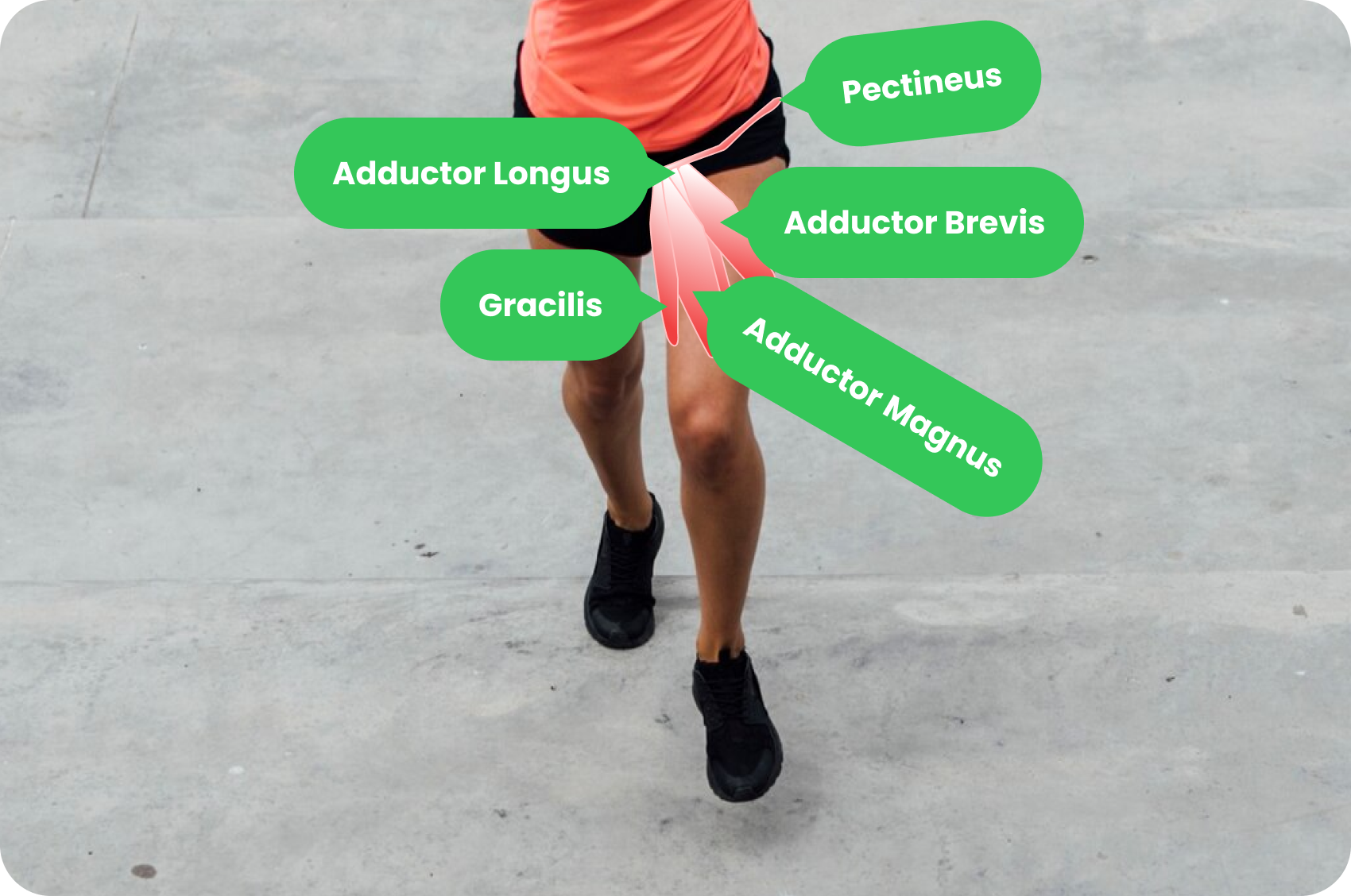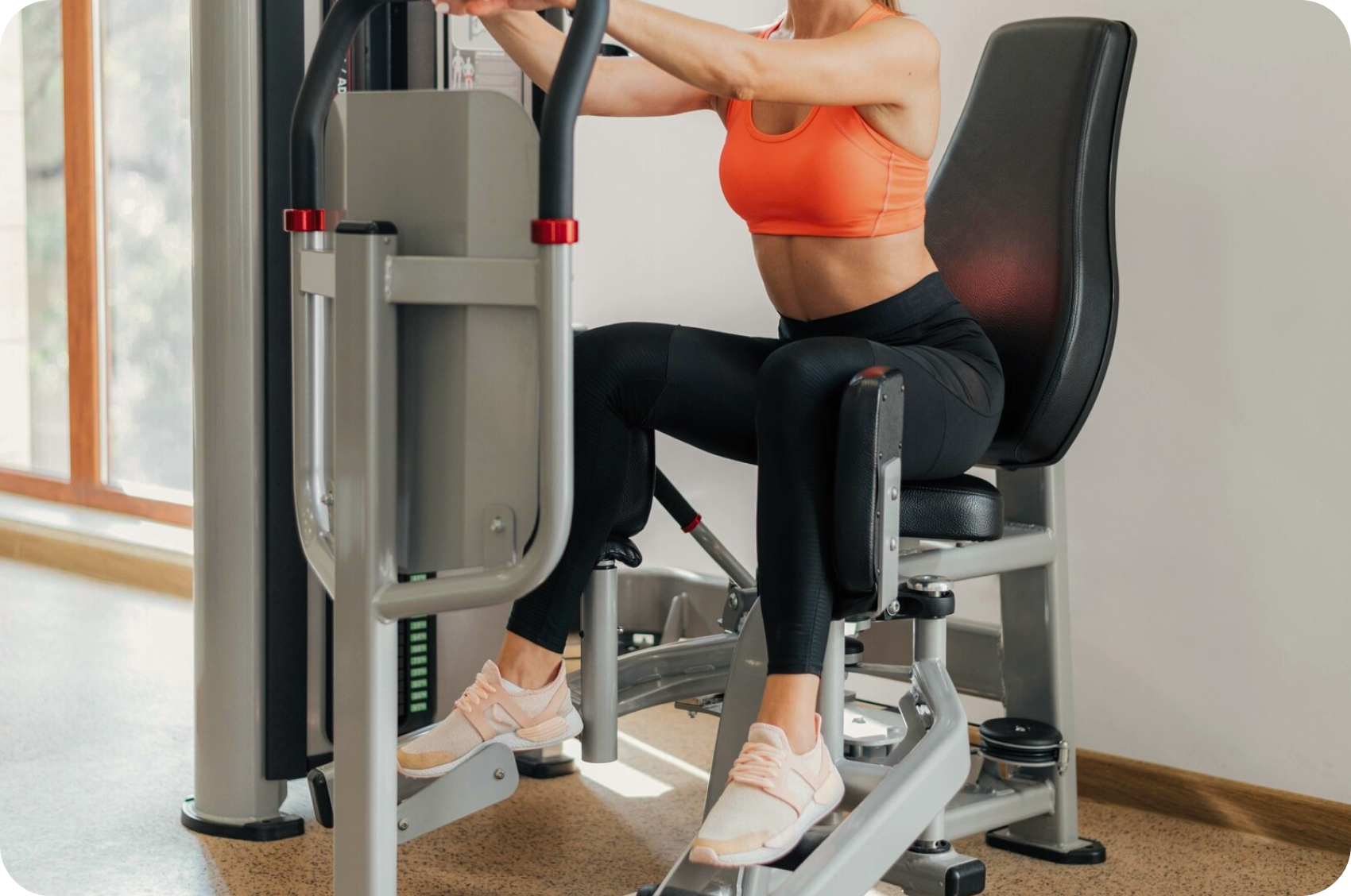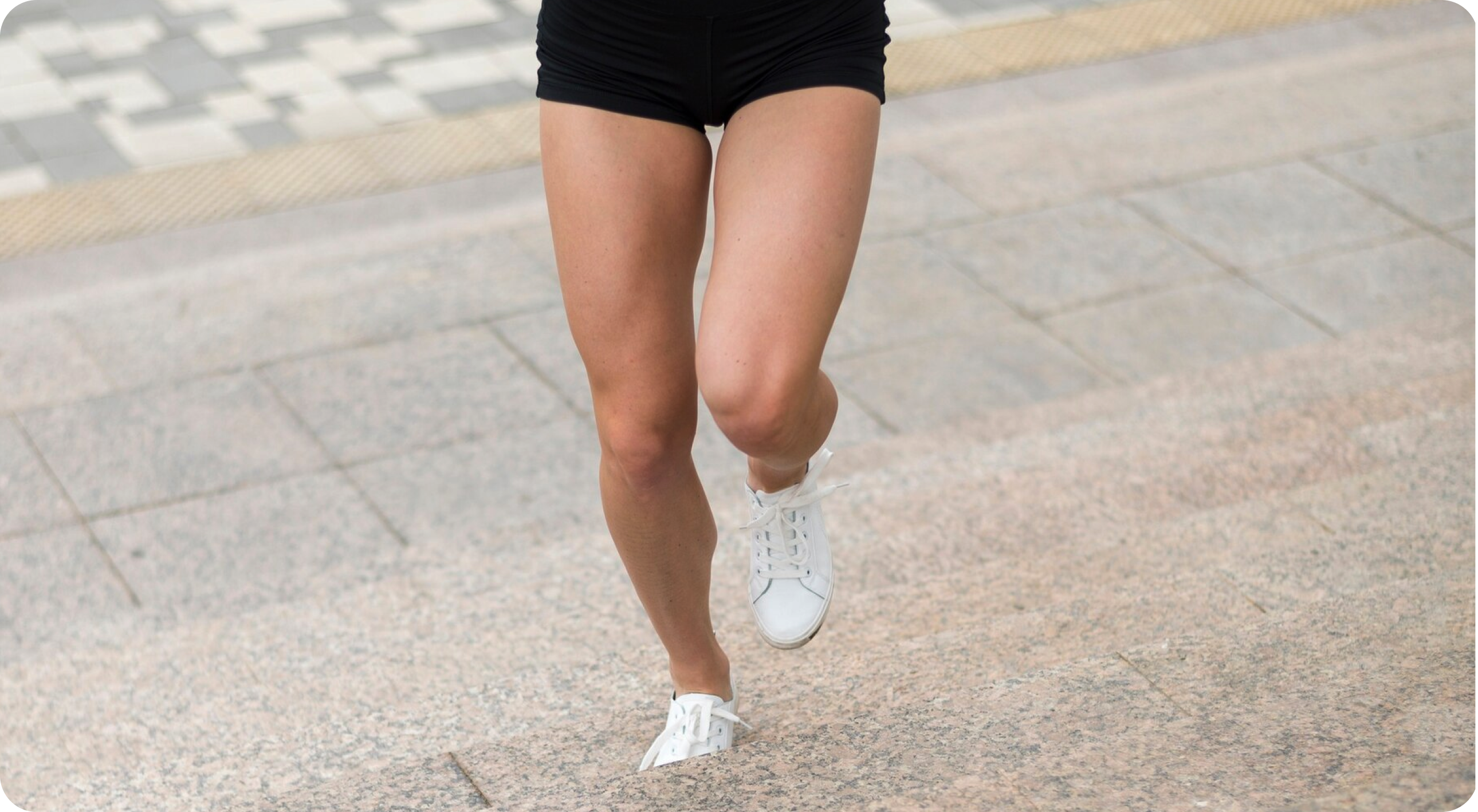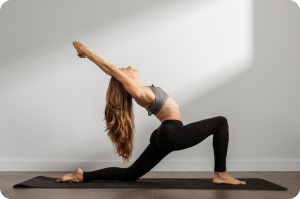Have you ever noticed how your legs move when you walk, run, cycle, or swim?
It’s all thanks to two key muscle groups: abductors and adductors.
In this article, we will explore what the hip adductor muscles are, how they help us, and what the best exercises are to strengthen them.
Understanding these muscles and their functions can help you appreciate how your body moves and how to keep it strong and injury-free.
Let’s go!
Understanding Abduction and Adduction
Imagine you’re cycling up a hill.
As you pedal, your abductor muscles, located on the outer side of your hips, work to keep your knees stable and prevent them from moving outward.
These muscles are crucial for maintaining proper form and ensuring your leg movements are efficient and controlled.
On the other hand, your adductor muscles, found on the inner thighs, play a different role.
They help pull your legs back toward the centerline of your body with each pedal stroke.
This movement is vital for generating power and keeping your balance, especially on uneven terrain.
Both muscle groups are essential for your performance.
Let’s explore the difference further.
Abduction
Abduction means moving a limb away from the center of your body.
For example, if you lift your leg out to the side, that’s abduction.
The muscles responsible for this are called abductors and are located on the outer side of your hips.
Adduction
Adduction is the opposite — it means moving a limb towards the center of your body.
If you stand with your legs apart and then bring them together, you’re using your adductors, which are the inner thigh muscles.
Adduction and Abduction Movements in Triathlon Activities
Now, let’s explore how the hip abductor and adductor muscles work during triathlon training.
Swimming
In swimming, abductors help kick your legs out to the side, and adductors bring your legs together for a powerful push forward.
Cycling
When cycling, hip abductor muscles keep your knees stable, while adductors help pull your legs back towards the bike’s centerline with each pedal stroke.
Running
Abductors stabilize your hips and legs, preventing your knees from caving in.
Hip adductors bring your legs together after each stride, ensuring smooth forward movement.
Overall, strong abductor and adductor muscles are crucial for maintaining proper alignment, improving performance, and reducing the risk of injuries during triathlon activities.
What Muscles Make Up Your Abductors and Adductors?
Now, let’s move on a little deeper and discover what muscles for abductors and adductors contain.
This will help you better understand how these muscles work.
As you already know, your hip abductors are responsible for moving your limbs away from the center of your body. The main abductor muscles are:
- Gluteus medius is located on the outer surface of the pelvis. This muscle is key for hip stability and movement.
- Gluteus minimus is situated beneath the gluteus medius; it assists with hip abduction and internal rotation.
- Tensor fasciae latae (TFL) is found on the outer thigh. This muscle works with the gluteal muscles to stabilize and move the hip.

Your adductor muscles are responsible for pulling your limbs toward the center of your body.
The main adductor muscles are:
- Adductor longus runs from the pubic bone to the middle of the femur, helping to bring the thigh inward.
- Adductor Brevis, located just behind the adductor longus, also aids in the adduction of the thigh.
- Adductor magnus is the largest of the adductors, extending from the pelvis to the femur. It plays a crucial role in thigh adduction and hip stabilization.
- Gracilis: A long, thin muscle running down the inner thigh, it helps with hip adduction and knee flexion.
- Pectineus, found in the upper thigh, assists in hip adduction and flexion.

These muscles work together to stabilize your hips and legs, allowing you to perform a variety of movements efficiently and effectively.
It is important to keep these muscles strong to level up your walking, running, cycling, and swimming while reducing the risk of injury.
Here, we’ve prepared a few exercises you can do to strengthen your leg muscles.
Abductor and Adductor Muscles Exercises for Triathletes
As a triathlete, you have a busy and varied training routine, and we get that.
So, how does training the abductors and adductors fit in?
Here are some effective abductor and adductor exercises to strengthen your muscles.
Sumo Squats
Stand with your feet wider than hip width, and your toes pointed slightly outward.
Lower your body into a squat, keeping your back straight and knees aligned with your toes. Push through your heels to return to the starting position.
This exercise targets the inner thighs and adductors.
Side Lunges
Start with your feet together.
Step out to the side with your right foot, bending your right knee while keeping your left leg straight.
Push back to the starting position and repeat on the other side.
This movement engages the adductors as you push off to return to the center.
Adductor Machine
Sit on the adductor machine at the gym.
Place your legs against the pads and slowly bring them together by squeezing your inner thighs. Return to the starting position in a controlled manner.
This machine specifically targets the adductor muscles.

Lateral Leg Raises
Lie on your side with your legs stacked.
Lift your top leg up and then slowly lower it back down. Repeat for the desired number of repetitions, then switch sides.
This exercise works the adductor muscles by moving the leg toward the midline of the body.
Inner Thigh Circles
Lie on your back with your legs extended.
Lift one leg up and make small controlled circles with your foot, focusing on engaging the inner thigh muscles. Switch directions and repeat, then switch legs.
This helps to isolate and strengthen the adductors.
Clamshells
Lie on your side with your knees bent and feet together.
Keeping your feet touching, lift your top knee as high as you can without moving your pelvis. Lower your knee back down.
This exercise can be made more challenging by adding a resistance band around your thighs.
These exercises can help strengthen your adductors, improving stability, balance, and overall leg strength.
Make sure to perform each exercise with proper form to avoid injury and maximize effectiveness.
Common Mistakes in Abduction and Adduction Exercises
When performing abduction and adduction exercises, it’s essential to avoid common mistakes to ensure you’re getting the most benefit and reducing the risk of injury.
Here are some mistakes to watch out for:
Incorrect Body Alignment
Ensure your body remains in proper alignment.
For example, keep your hips stacked during side leg raises and avoid letting your top hip rotate forward or backward.
Proper alignment ensures the right muscles are targeted and reduces strain on your lower back.
Using Momentum
Avoid swinging your leg or arm using momentum rather than controlled muscle contractions.
This can reduce the effectiveness of the exercise and increase the risk of injury.
Focus on slow, controlled movements to fully engage the abductor muscles.
Neglecting Core Engagement
Engage your core muscles to maintain stability and support your lower back.
This helps prevent compensatory movements and ensures the abductor muscles are doing the work.
Overextending the Range of Motion
Avoid lifting your leg or arm too high, which can place unnecessary stress on your joints.
Lift to a height where you feel the muscles working without straining other parts of your body.
Allowing Knees to Collapse Inward
During exercises like sumo squats or side lunges, ensure your knees stay aligned with your toes and do not collapse inward.
This helps protect your knees and ensures proper activation of the adductors.
Improper Foot Positioning
Ensure your feet are positioned correctly to maintain balance and proper form.
For example, in sumo squats, your toes should be pointed slightly outward to target the adductors effectively.

Conclusion
The abductor and adductor muscles play key roles in our movement and stability.
Abductors, found on the outer sides of your hips, help move your limbs away from the center of your body.
They are essential for activities like running, cycling, and swimming, where they stabilize your hips and legs. For instance, when you cycle, your abductors keep your knees stable and prevent them from moving outward. In swimming, they help you kick your legs out to the side, aiding in propulsion and balance.
Adductors, located on the inner thighs, pull your limbs toward the center of your body.
They are crucial for movements that require bringing your legs together, such as during the breaststroke in swimming or when pedaling in cycling.
Strong adductors help maintain balance, generate power, and ensure proper alignment, reducing the risk of injuries.
Whether you’re a professional athlete or just staying fit, pay attention to your abductor and adductor muscles to improve your overall physical health.
If you have weak hip abductors and adductors, consider doing exercises like side lunges, sumo squats, clamshells, and other mentioned in this article.
You don’t need to do them every day, but adding these adduction and abduction exercises into your routine once or twice a week will benefit you in the long term.






